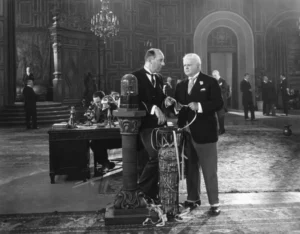
You have made up your mind to start investing in the stock market. Hooray! But things could be looking a little up and down with the economy and/or the state of the world, so how do you know when the best time is to start?
This article will explore questions related to time and investing; when to start investing, how long it takes to do and reach your financial goals, as well as the importance of leaving your investments alone for as long as possible.
Read on to find out when you should start!
WHEN IS THE RIGHT TIME TO START INVESTING?
One of the most common questions beginner investors ask is, “When is the right time to invest?”
The answer is that once you have a few things in place for your financial security (a fund for expected, unexpected events and a cash safety net) then start as soon as possible!
There is a well-known saying when it comes to investing “it’s not about timing the market, but about time in the market,”
Timing the market refers to trading rather than investing. Traders are doing their best to predict what the stock market will do and are buying and selling stocks and shares in the short term to make a profit.
Timing the market perfectly is nearly impossible, even for experienced professionals! As no one actually knows what the stock market will do.
So, What Is Investing?
Investing is buying and holding stocks and shares for the long term. One of the key principles is to leave your money invested, especially through all the ups and downs. By maximising your time in the market you always harness the underlying upwards growth in the stock market. This will be enhanced by the magic of compounding.

More Time In The Market Means Greater Returns
Time has shown that falls in the stock market tend to be concentrated in short periods of time and the biggest gains are often clustered together.
If you react to falls in the stock market, sell your investments and then wait until things have calmed down a bit you are likely to miss the ‘good’ days when share prices increase significantly. Days which no one can predict! Historically, many of the best periods for stock markets have occurred during periods of extreme volatility.
Leaving your money in the market means your investments will benefit from these. If you are trying to work out when these days are going to be you are more than likely to miss them and harm your long-term returns.
HOW MUCH TIME DOES IT TAKE TO INVEST?
The time needed to invest depends on whether you pay a financial advisor to invest for you or you decide to invest yourself.
Option 1: Financial Advisor
When you employ a financial advisor (for a percentage fee) you will meet them at the start to look at your financial situation and goals. The advisor will put together a financial plan, provide some options and manage your investments for you. After this you meet with them every 6 or 12 months to review your progress and make any adjustments as required, to meet your goals or in response to any changes in your circumstances.
Option 2: DIY Investing
If you want to invest yourself then you will need to spend some time learning how to do this. Don’t worry it’s simpler than you think! You do not need to know or understand everything, only some simple principles that you put into practice consistently and online. You will then be able to open a tax efficient account (Stocks and Shares ISA or SIPP) with a robo-advisor/online broker, put some money in and choose some investments yourself.
As a DIY investor you can invest in funds or learn to choose a portfolio of individual stocks and shares. Simple investing in funds can be learnt and set up in a few hours and then be left alone. It is then good practice to review your investments once a year.
More adventurous investing (buying a portfolio of shares of individual companies) does require more time to understand and learn. But you don’t need to spend hours in front of your computer watching charts go up and down. The important thing is to have a strategy. On an ongoing basis, you then need several hours every few months or so to rebalance it. This means selling off the shares not doing well and replacing them with ones that could do better.
What About Trading?
Trading meanwhile requires a much bigger time commitment. In Live on Less, Invest the Rest, Andrew Craig states that you need the equivalent of at least an A Level’s worth of study (more like a degree) before you will be comfortable and any good at it. Even when you have put this time in you still need a significant amount of time on a daily basis to trade. There is no guarantee of success, it is time consuming and can also be an emotional roller coaster.
HOW LONG WILL IT BE BEFORE I CAN QUIT MY JOB?
The desire to quit the daily grind is a common motivator for many investors. The purpose of investing is to reach financial independence or freedom by having a passive income. A passive income is money generated from something other than an employer or a contractor i.e. you are not selling you time for money. It comes from assets that require only minimal monitoring on an ongoing basis. With a passive income, you can then choose to work or not.
The timeframe for achieving this goal varies significantly from person to person and depends on whether you are aiming for ‘financial independence’ or ‘financial freedom’.
Financial independence means that you are debt free and have assets (and this may not only be stock market investments) that provide you with an income that is the equivalent of your current lifestyle.
Financial freedom is a level of wealth beyond beyond this. You can afford your current lifestyle as well as being able to afford the things that you want living your ideal life, without any financial constraints.
The assets needed to be financially independent or financially free are different for everyone and depend on their current financial position and current lifestyle. If, for example you need £2000 per month to cover your living costs you will need a smaller pot of assets to provide this as a passive income than if you need £4,000 or £6,000 per month to live on.
You can use this financial calculator to work out much you need in assets to be able to stop working/retire.


SAVE TIME BY HAVING A STRATEGY AND STICKING TO IT
If you use a mediocre strategy consistently, you’ll beat almost all the investors who jump in and out of the market, change tactics in mid-stream and forever second guess their decisions. Successful investing isn’t alchemy; It’s a simple matter of consistently using time tested strategies and letting compounding work its magic.’
James O’Shaughnessy, What Works on Wall Street
Successful investors have a clear strategy and stick to it. They are consistent and boring rather than random and whimsical!
This approach will save you both time and energy time setting up and managing your investments on an ongoing basis. You then don’t need to worry about and get can get on and enjoy your life, knowing your money is working for you.
THE TIME TO INVEST IS NOW!
A simple strategy to get your money working for you now can be done alongside your life and in the time you have. Leaving it alone for as long as possible is the best way of achieving financial independence and creating a brighter future for yourself.
Investing in your financial education is the first step in doing this.
If you want to learn more, you may want to check out these blogs from our archive:
Why Is Investing So Scary? And Why You Should Invest Anyway
So You Want To Start Investing? Here’s How To Do It Simply And Sustainably




